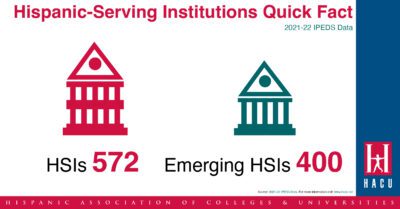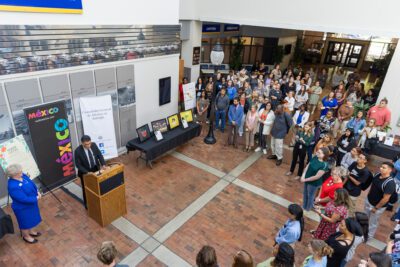

|
|
For the first time in its history, Lenoir Community College has a director of Latino outreach and recruitment. The role is thanks to funding from the Train the East initiative, a new two-year education initiative focused on Latinx students at Lenoir, James Sprunt, Wayne, and Sampson community colleges.
Each college is receiving a $250,000 grant from the Anonymous Trust for implementation on their campuses. The funds are supporting both a recruitment success coach and student scholarships to support the cost of tuition, books, and other fees for Latinx students.
“What we’re finding is that we’ve got to go back to the basics of connecting with the families and working with school systems,” said John Paul Black, senior vice president of student services and workforce development at Lenoir Community College.
The initiative provides a focus, a framework, and a fund for the schools with the goal of recruiting, training, and supporting students from Latinx communities in rural eastern North Carolina to build a skilled and credentialed workforce in their respective counties.
Breaking down barriers
“We want to break down some of the barriers and break down some of the limitations,” said Black.
Prudencio Martinez-Mengel is the new director of Latino outreach and recruitment at Lenoir Community College. He might be new to the role formally, but he’s not new to the college. Martinez-Mengel previously worked in other capacities at the college, mostly in workforce development. He is also on Gov. Cooper’s Advisory Council on Hispanic/Latino Affairs.
With the substantial growth in the Latinx community over the last decade, the Train the East initiative comes at a significant moment. From 2010 to 2020, the Latinx community has grown by more than 40%, or more than 300,000 people, in North Carolina, making it the largest increase in population of any racial/ethnic group in the state. According to the 2020 U.S. Census, the Hispanic/Latinx community comprises over one million people in North Carolina.
Hispanic Serving Institutions (HSIs), which are characterized by having a Latinx/Hispanic student population of 25% or more, are also on the rise in North Carolina. Sampson Community College and James Sprunt Community College are the only two HSIs in the state, but 12 colleges are currently considered ‘emerging HSIs’. Wayne Community Colleges is one of those schools.
Bridging the gap
Although Lenoir Community College is not currently considered an HSI or an emerging HSI, it has a significant Latinx population. Out of all of their demographic groups, the Latinx population is the highest performing in their Career and College Promise (CCP) classes, President Rusty Hunt said. However, Hunt noticed they lagged in enrolling in college after high school and knew there were reasons for that gap.
It ultimately led him to the question, “How can we better serve them?”
President Hunt was able to travel to Mexico, along with Go Global, myFutureNC, and the Anonymous Trust to learn more about how the college could better serve its Latinx students and the greater community. The Train the East initiative was born out of this trip and collaboration.
“We need Latinos in nursing. We need Latino teachers. We need Latinos across the board – accountants, lawyers. You name it, we need them,” said Hunt.
The initiative will help support the goals of adult learners through the success coach and resources for connecting to workforce credentials. For more traditional students, Lenoir Community College hopes to bridge the gap between Career and College Promise enrollment and full-time college enrollment.
The collaboration hopes that the model will be easily replicable for other institutions across the state.
“There was nothing better than when I stand on that stage and shake hands at graduation for these folks who look me in the eye and say thank you for the opportunity. There is nothing better than that and I see it every time we have a ceremony,” said Hunt.
Editor’s Note: The Anonymous Trust supports the work of EdNC.
Behind the Story
The terms Latinx, Latino, and Hispanic are used in this article, but they are not necessarily interchangeable.
According to the National Association of Hispanic Journalists, “Latino/Latina/Latinx/Hispanic are often used as ‘umbrella terms’ describing people who are either themselves from a Spanish speaking country or ancestors. While the terms are sometimes used interchangeably, in reality ‘Hispanic’ only refers to persons of Spanish-speaking origin or ancestry, while ‘Latino’ is accurate to refer to anyone of Latin American origin or ancestry.”





